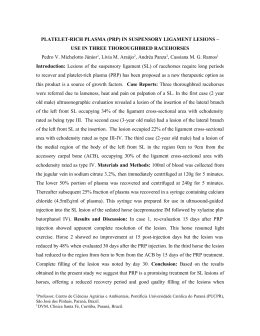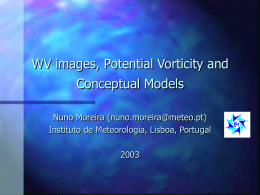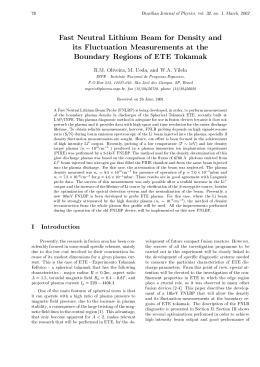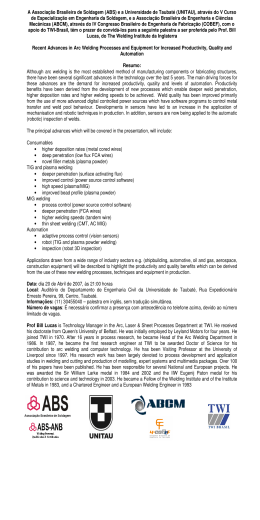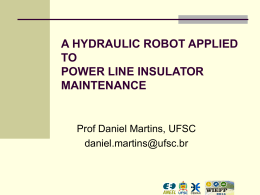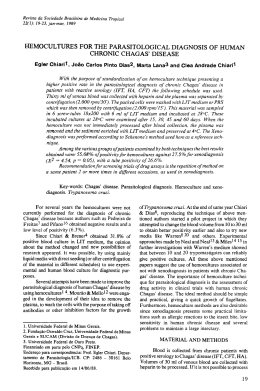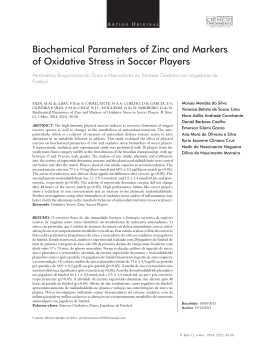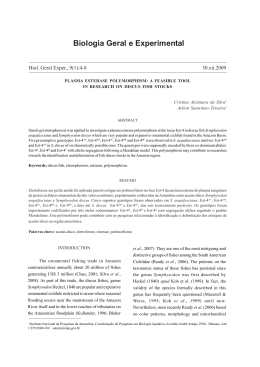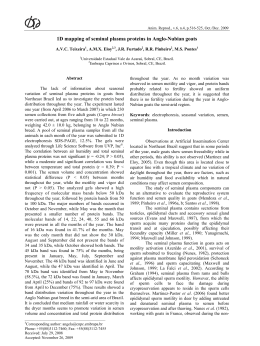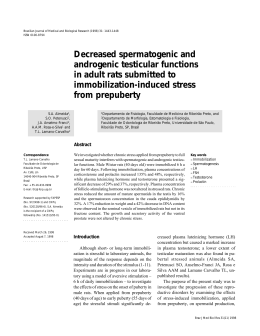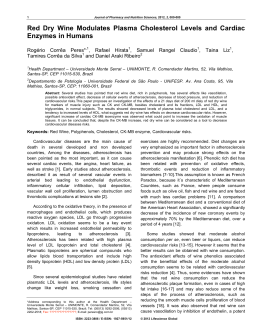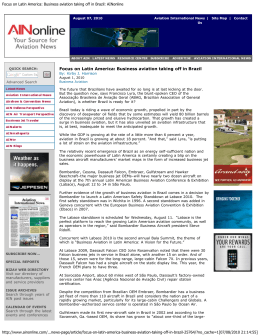26th Symposium on Fusion Technology P1-053 Overview of Modelling Activities for Plasma Control Upgrade in JET R. Albanese1, G. Ambrosino1, M. Ariola1, G. Artaserse1, T. Bellizio1, V. Coccorese1,3, F. Crisanti2, G. De Tommasi1, R. Fresa1, P.J. Lomas4, M. Mattei1, F. Maviglia1, A. Neto5, F. Piccolo4, A. Pironti1, A. Portone6, F.G. Rimini3, F. Sartori6, A. Sorrentino1, V. Toigo7, F. Villone1, B. Viola1, L. Zabeo8 and JET EFDA Contributors* JET-EFDA, Culham Science Centre, OX14 3DB, Abingdon, UK Assoc. Euratom-ENEA-CREATE, Univ. Napoli Federico II, Via Claudio 21, 80125 Napoli, Italy 2 EFDA Close Support Unit, Culham Science Centre, Abingdon OX14 3DB, UK, European Commission, B-1049 Brussels, Belgium 3 ENEA Fus, EURATOM Assoc, 00040 Frascati, Italy 4 CCFE, Culham Science Centre, OX14 3DB, Abingdon, UK 5 Associação Euratom-IST, Instituto de Plasmas e Fusão Nuclear, Av. Rovisco Pais, 1049-001 Lisboa, Portugal 6 Fusion for Energy, 08019 Barcelona, Spain 7 Consorzio RFX, EURATOM-ENEA Association, C.so Stati Uniti 4, 35127 Padova, Italy 8 ITER, St. Paul-Lez-Durance, 13108, France * See the Appendix of F. Romanelli et al., Proceedings of the 22nd IAEA Fusion Energy Conference 2008, Geneva, Switzerland 1 Corresponding author: [email protected] Phase 2 of JET enhancement project PCU (Plasma Control Upgrade) [1] aimed at increasing the capabilities of the plasma vertical stabilization (VS) system to recover from large edge localised modes, focusing on the optimization of the modelling tools so as to allow the best experimental conditions during the post shut-down experimental campaigns. It also intended to provide an adequate support from modelling and control groups to the construction and commissioning of the new enhanced radial field amplifier (ERFA) [2]. The results related to the original goals and aims include: the development of a closed loop model of the VS system including the new ERFA as well as the coupling between the VS and the SC (shape control) loops, which in some cases may yield undesired oscillations [1]; the choice of the set of turns to be used in the control coils, taking into account the parameters of ERFA. The design choices, the analyses and the experimental tests showed that the new VS system meets the original requirements for plasmas with a growth rate of 200 s-1 with a low inductance turn option. The paper will also summarize the outcome of the additional activities started later to face some issues raised during Phase 2 due to the interaction with other subsystems and enhancement projects, related to the effects of the passive structures: on the magnetic sensors, in view of the installation of the ITER-like wall [3], leading to the selection of a new controlled variable that does not utilize the sensors expected to be most shielded by the structure; on the voltage drop of the 12kV-5kA ERFA dc convertor, in order to address its upgrading [4] by estimating the charging capability (300 A) needed for JET operation; on the breakdown, so as to ease plasma initiation with different sets of turns [5]. [1] F. Sartori et al., Fus. Eng. Des., 83, no. 2–3, 2008, pp. 202–206. [2] V. Toigo et al., Fus. Eng. Design, vol. 82, no. 5–14, pp. 1599–1606, Oct. 2007. [3] J. Paméla et al., Fus. Eng. Des., 82, 5-14, 2007, pp. 590-602. [4] S.R. Shaw et al., this conference. [5] F. Maviglia et al., this conference
Download
